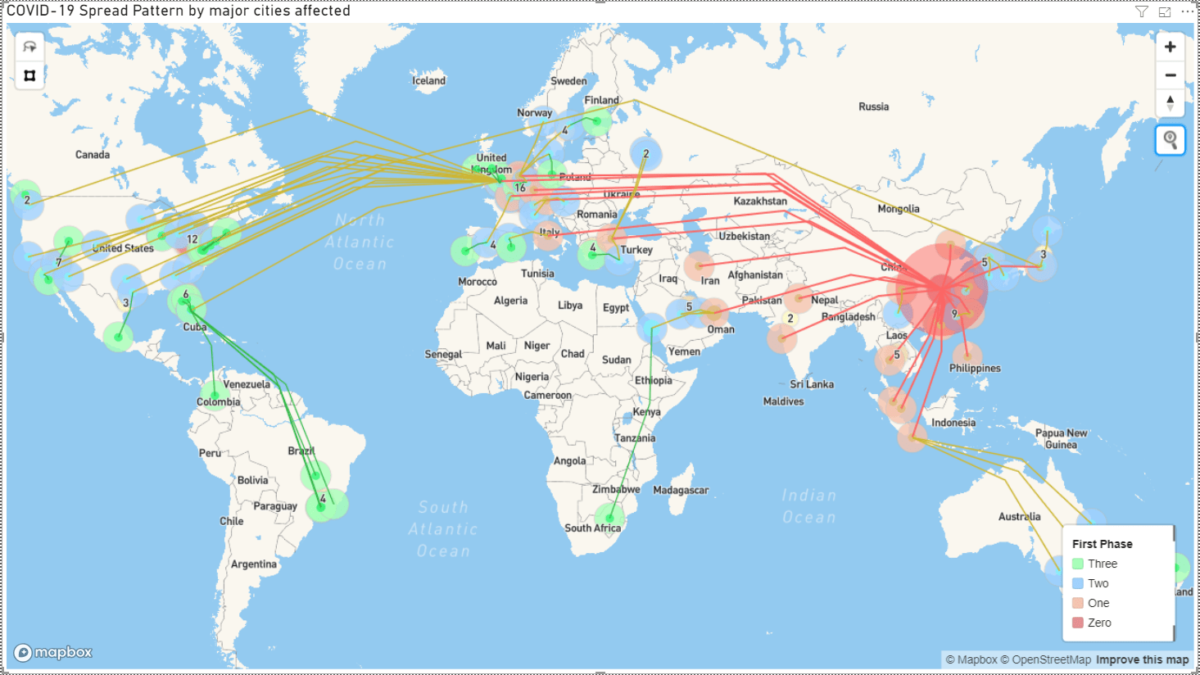Mitigating the Impact of the Coronavirus on Supply Chains with Machine Learning and Real-Time Visibility
A New York Times article from August 2019 highlights how much artificial intelligence (AI) is indebted to humans. That is because lots and lots of people are needed to help an AI system learn so that it can eventually act on its own.
Blue Yonder understands the need for data to help our customers plan and respond to the supply chain not only in routine times, but also in times of crisis, such as now with the exponential spread of the Coronavirus (Covid-19).
As of March 6, according to the World Health Organization dashboard, there are 3,381 recorded deaths and 98,202 confirmed cases across the globe. The coronavirus, which began in China, has spread to 88 countries/areas/territories to date and is on every continent except Antarctica.
The outbreak has a threefold impact on the global supply chain. The first is increased demand for items needed to combat the virus, such as medical equipment and supplies. The second is the shortage of parts and products from suppliers located in the heart of the outbreak – China – that companies need to make products and keep store shelves stocked. The third is exports to China. Lucky are the companies that can shift production to other countries like Mexico or Vietnam. But these measures are not sufficient to replace China, the world´s manufacturing powerhouse or the purchasing power of the world’s biggest economy.
This is where real-time visibility, AI, and machine learning (ML) come into the picture. Because the virus is so new and there is little historical data, Blue Yonder’s data science team is busy feeding data into the AI-driven control tower to help visualize and predict current and future impacts of the coronavirus.

Some of this data includes taking feeds from the Centers for Disease Control and Prevention (CDC) in real-time and mapping manufacturing and logistics sites to model responses to get more accurate predicated arrival times of supplies. With real-time visibility capabilities, customers can gain time to resolution to proactively identify issues deep in the supply chain, e.g. “where is my inventory,” and leverage ML-based recommendations to find alternate sources of supply and integrated execution capabilities to turn recommendations into alternate supply shipments.
The Blue Yonder data science team is currently helping companies model a variety of scenarios to bring insight into the following three factors:
- Inventory Visibility: Knowing the quantity and location of inventory in the supply chain is critical to meeting a spike in demand for certain medical devices and other urgently needed supplies. By using AI and ML, companies can better model and predict demand and fine tune their inventory from procurement to transport to warehouse to routing supplies to locations ahead of demand.
- Supply Prediction: Using AI and ML helps supply chain operators predict the arrival time of supplies, allowing them to take preventative measures to mitigate the impact of shortages. Where ML and AI capabilities are of great benefit is in human-machine partnerships: ML-driven automation can take over routine tasks such as replenishment, while human task forces can focus on exception handling and short-term strategic decisions.
- Adaption: Autonomous decision-making and material handling systems allow companies to flexibly adapt to different scenarios and better prepare for the factors that might impact their ability to ship and receive materials. The collected data is also essential in helping to prepare for the next crisis.
Machines make predictions based on patterns in unfathomably large datasets, allowing people to make strategic decisions based on the relevant data points with the help of machine-based recommendations. In the case of a pandemic, or similar catastrophic event, the focus should be on machines autonomously running mundane, day-to-day tasks with people intervening based on experience and complementing the machine with strategic actions.
Blue Yonder’s ML-driven digital fulfillment platform is built for decision-making when conditions are uncertain. Machines are simply far better than humans at dealing with enormous amounts of data and making many short-term, data-based decisions. Our ML capabilities learn from the changing demand and supply patterns so that after two to three weeks the ML system begins to predict supply shortage, as well as recommend substitutions (depending on the industry) or replenishment actions.
Once the disruption subsides, our ML/AI solutions help to meet demand and smooth supply by making automated recommendations based on the millions of data points the system receives every day. At the same time, the collected data helps us to prepare for a similar crisis in the future.
Blue Yonder’s solutions and data science capabilities provide a critical solution for companies that require real-time supply chain visibility in order to plan for and instantly adapt to changing circumstances. In the end, it’s machines and people working together that will get us through this crisis, and those that will inevitably occur again.
To learn more about Blue Yonder’s capabilities visit BlueYonder.com.
COVID-19 Coronavirus Resources
- U.S. Centers for Disease Control & Prevention (CDC) Resources:
- U.S. Food & Drug Administration (FDA)
- U.S. Labor Department – Occupational Safety and Health Administration


Comments are closed.